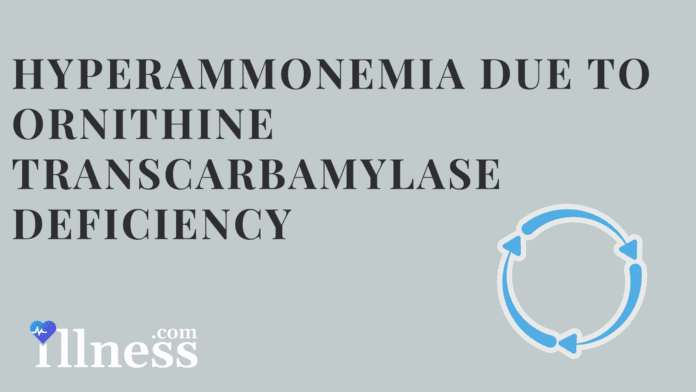Overview Of Ornithine Carbamoyltransferase Deficiency Disease
Ornithine carbamoyltransferase deficiency disease is an inherited disorder that causes ammonia to accumulate in the blood. Ammonia, which is formed when proteins are broken down in the body, is toxic if the levels become too high. The nervous system is especially sensitive to the effects of excess ammonia.
This disease can become evident at any age. The most severe form occurs in the first few days of life. This neonatal-onset form of the disorder usually affects males; it is very rare in females. An infant with the neonatal-onset form of ornithine carbamoyltransferase deficiency disease may be lacking in energy (lethargic) or unwilling to eat, and have a poorly controlled breathing rate or body temperature. Infants with this disorder may be described as “floppy” and can experience seizures or coma. Complications from ornithine carbamoyltransferase deficiency disease may include developmental delay and intellectual disability. Progressive liver damage may also occur.
In some affected individuals, signs and symptoms of ornithine carbamoyltransferase deficiency disease may be less severe, and may not appear until later in life. The late-onset form of the disorder occurs in both males and females. People with late-onset ornithine carbamoyltransferase deficiency disease may experience episodes of altered mental status, such as delirium, erratic behavior, or a reduced level of consciousness. Headaches, vomiting, aversion to protein foods, and seizures can also occur in this form of the disorder.
Commonly Associated With
Ornithine transcarbamylase deficiency
Causes Of Ornithine Carbamoyltransferase Deficiency Disease
Mutations in the OTC gene cause ornithine carbamoyltransferase deficiency disease. The OTC gene provides instructions for making the ornithine transcarbamylase enzyme.
This disease belongs to a class of genetic diseases called urea cycle disorders. The urea cycle is a sequence of reactions that occurs in liver cells. It processes excess nitrogen, generated when protein is used by the body, to make a compound called urea that is excreted by the kidneys. The ornithine transcarbamylase enzyme starts a specific reaction within the urea cycle.
With this condition, the ornithine transcarbamylase enzyme is damaged or missing. The urea cycle cannot proceed normally, and nitrogen accumulates in the bloodstream in the form of ammonia.
Ammonia is especially damaging to the nervous system, so ornithine carbamoyltransferase deficiency disease causes neurological problems as well as eventual damage to the liver.
Other
Ornithine carbamoyltransferase deficiency disease is an X-linked disorder. A condition is considered X-linked if the mutated gene that causes the disorder is located on the X chromosome, one of the two sex chromosomes. A characteristic of X-linked inheritance is that fathers cannot pass X-linked traits to their sons.
In males (who have only one X chromosome), one altered copy of the gene in each cell is sufficient to cause the condition. In females (who have two X chromosomes), mutations in both copies of the gene will cause the disorder. Some females with only one altered copy of the OTC gene also show signs and symptoms.
In females, who have two copies of the X chromosome, one altered copy of the OTC gene in each cell can lead to less severe features of the condition or may cause no signs or symptoms at all. However, many females with one altered copy of this gene have ornithine carbamoyltransferase deficiency disease similar to affected males because the X chromosome with the normal copy of the OTC gene is turned off through a process called X-inactivation. Early in embryonic development in females, one of the two X chromosomes is permanently inactivated in somatic cells (cells other than egg and sperm cells). X-inactivation ensures that females, like males, have only one active copy of the X chromosome in each body cell. Usually, X-inactivation occurs randomly, such that each X chromosome is active in about half of the body cells. Sometimes X-inactivation is not random, and one X chromosome is active in more than half of the cells. When X-inactivation does not occur randomly, it is called skewed X-inactivation.



